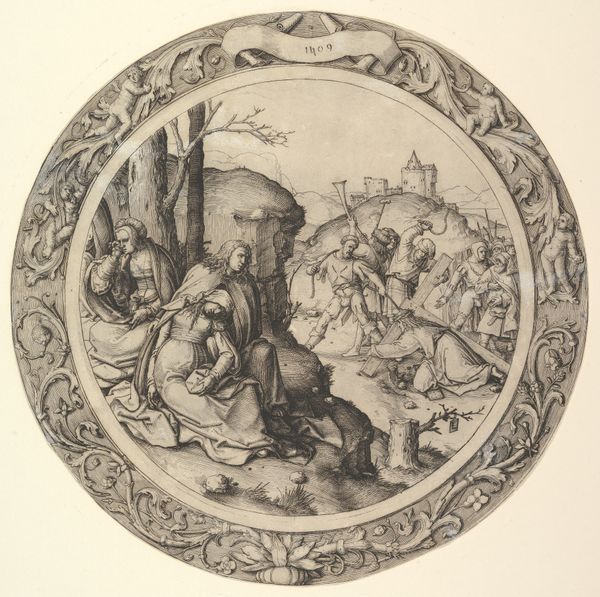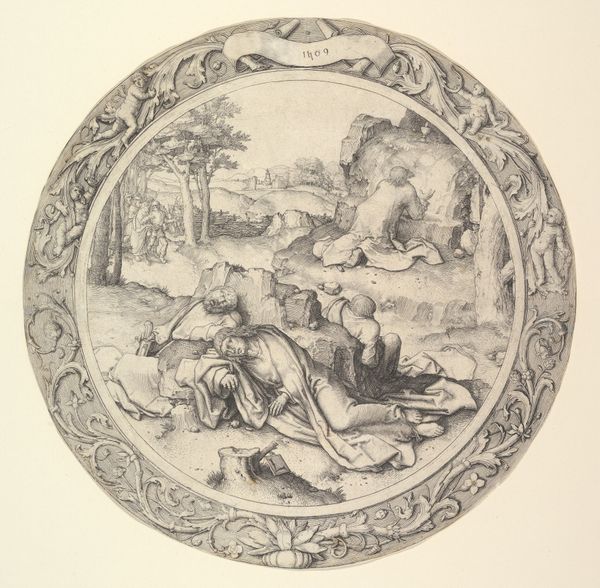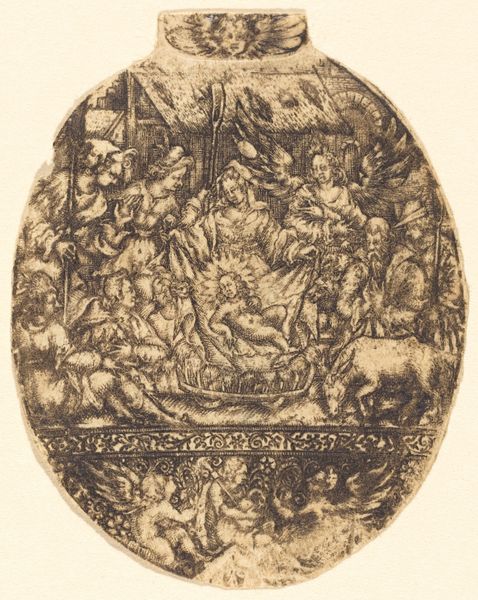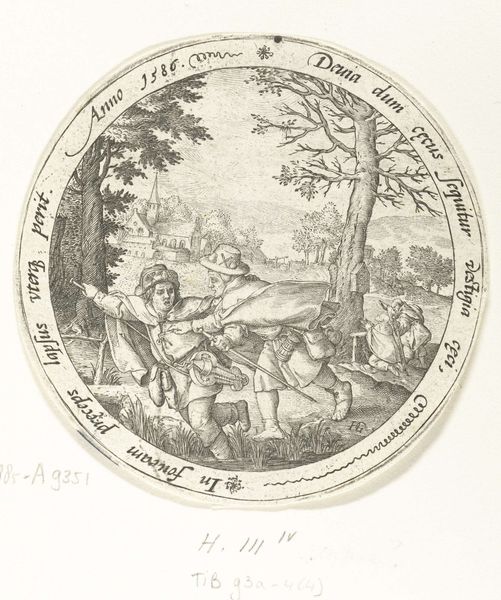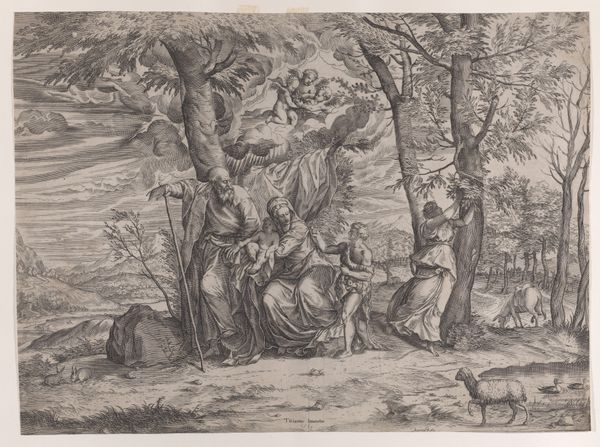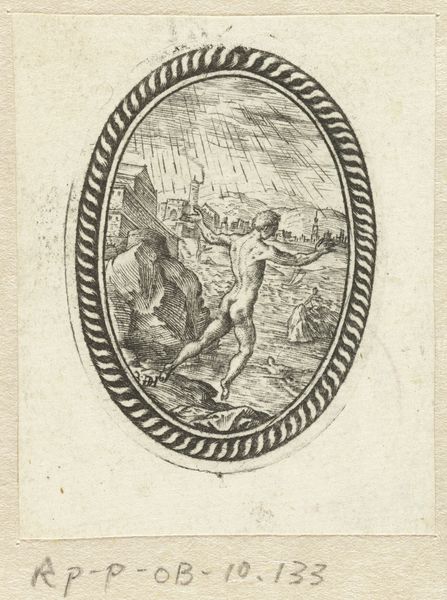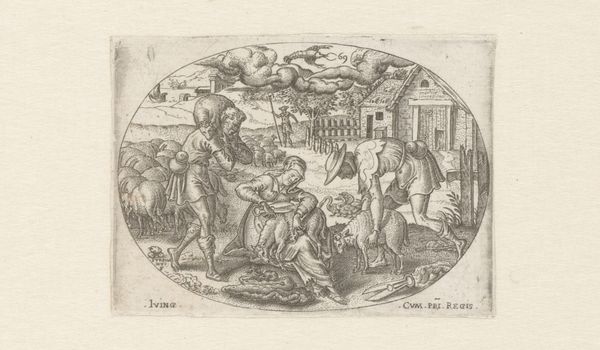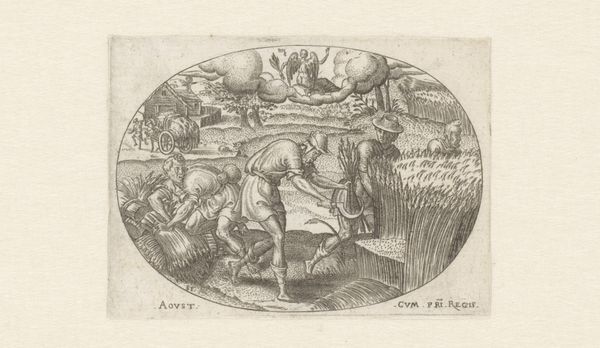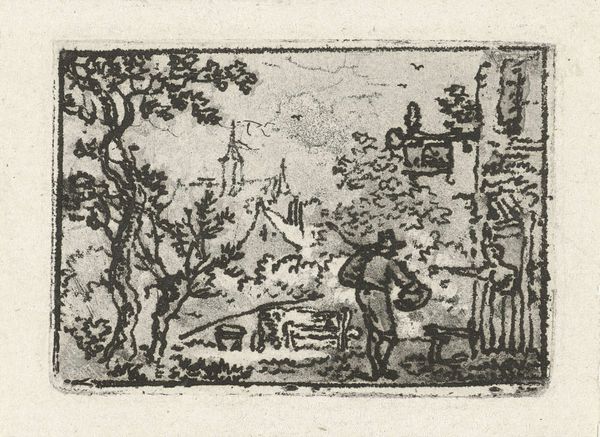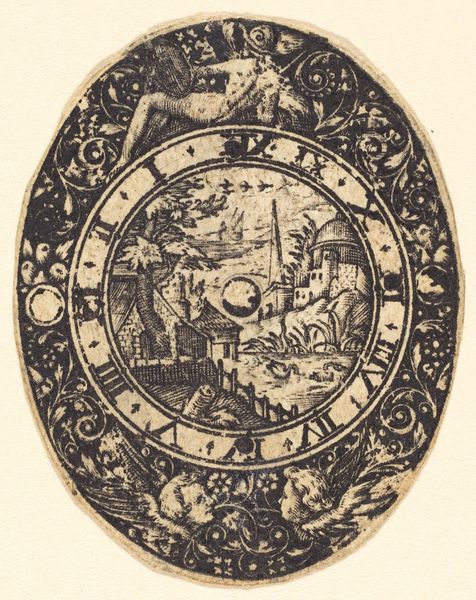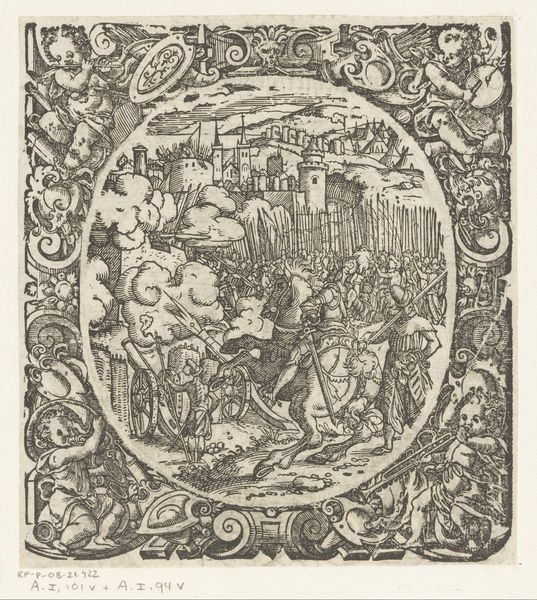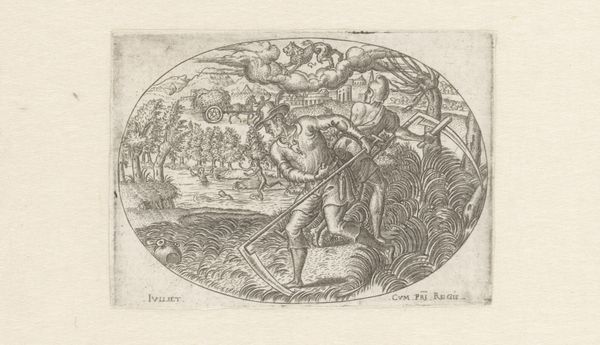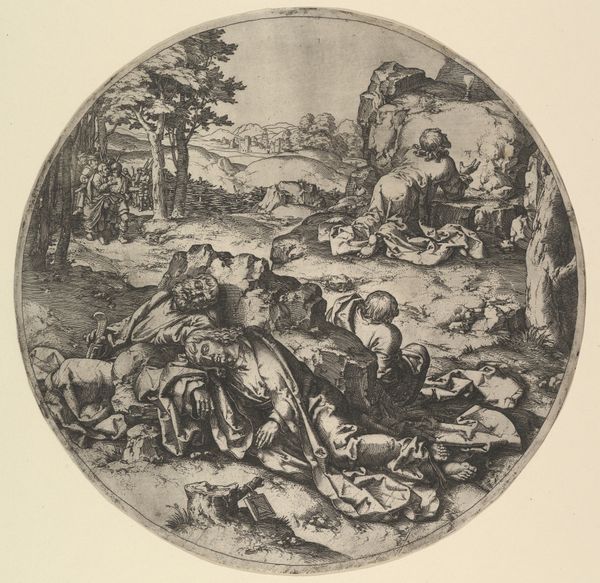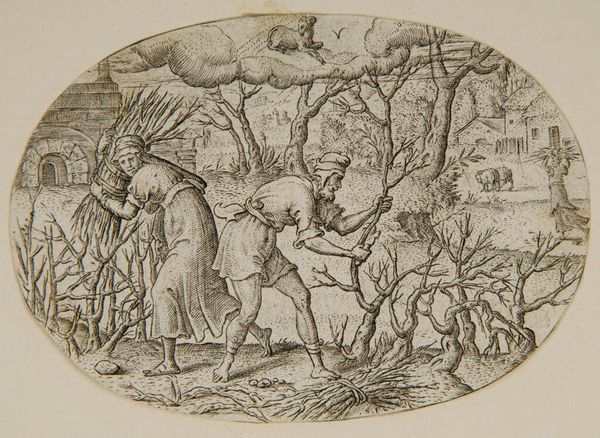
drawing, print, engraving
#
drawing
# print
#
landscape
#
mannerism
#
figuration
#
line
#
genre-painting
#
history-painting
#
engraving
Dimensions: Sheet: 1 7/16 in. × 1 in. (3.6 × 2.6 cm)
Copyright: Public Domain
Curator: Etienne Delaune’s "Shepherds," made sometime between 1540 and 1583, presents a pastoral scene, an engraving teeming with life and Old World charm. The composition, contained within an oval format, offers us a glimpse into the daily life of shepherds in a bygone era. What's your take, as an Iconographer? Editor: I’m immediately drawn to the sense of tranquility, or maybe its forced tranquility. There's an artifice to the idyllic scene. Despite the pastoral setting and the shepherds, there is an underlying tension. Notice the storm clouds brewing above a backdrop of classical ruins? Curator: Absolutely. That tension, I think, stems from the Mannerist style—a push and pull between ideal beauty and stylized distortion. The crisp lines, almost brittle in their precision, give everything an heightened, artificial feeling. Look at the figure reclining. Isn't that casual pose almost performative? Editor: It is a pose! And it's there that it comes alive. I mean, look at her – that reclined female figure could almost be Venus. And a distaff and spindle next to a shepherd is no coincidence; here weaving is no longer simply weaving, but becomes an evocative echo of classical ideals in a very idealized everyday scene. And a weaving implies a larger connection through thread, through shared work and communal activity, across classes. Curator: The prominence of line in the etching also emphasizes its role as a designed artifact, less about directly capturing observed reality and more about crafting a world, an emblem, full of borrowed symbols. This piece lives in a kind of symbolic tension, and not so very subtle in that symbolism! Editor: Exactly! The dogs are at rest but there; the sheep huddle but look healthy. It seems like even those gathering storm clouds have an elegance and formality, that classical reference you mentioned, in the context of this piece! Curator: Considering it as a piece intended for print, intended for circulation… Does its symbolism create some sort of moral argument or philosophical perspective? Or is the artifice part of the meaning? Editor: Perhaps the artist wanted to remind viewers that even simple lives are supported by a foundation of heritage and value systems that make that stability possible? It hints that simplicity has always required some sort of invisible work. Or perhaps this piece’s goal to capture the pastoral and simple has in fact produced this artificiality? Curator: Hmm, that resonates with me. "Shepherds," seems to encapsulate the longing for a simpler, more harmonious existence. That it can not perfectly reflect reality adds another subtle meaning layer about the purpose of art in representing such ideas. Editor: And the layers of symbols allow the piece to become less about one specific time period, and more a symbol of enduring themes of human endeavor that cross across time, echoing through these classical representations into more current sensibilities. I am taken with this sense of the eternal.
Comments
No comments
Be the first to comment and join the conversation on the ultimate creative platform.
